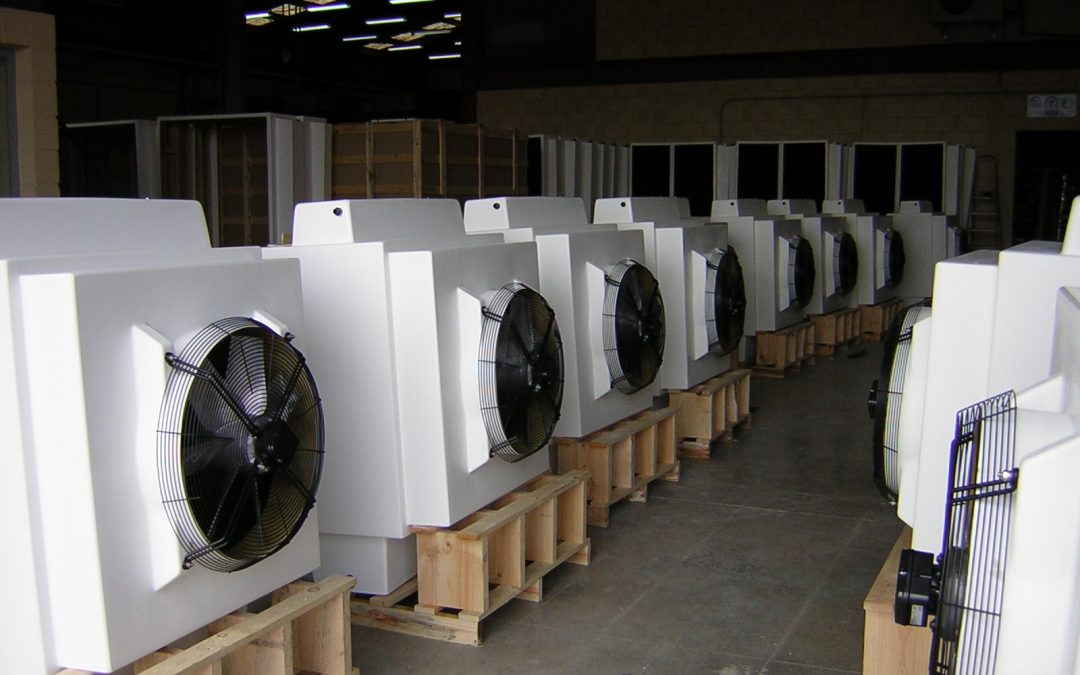Given your interest we transcribe here the article published in the following link:
Given the 2020 environmental objectives, evaporative cooling reduces CO2 emissions
- These equipments increase energy efficiency, make responsible use of water and help environmental and economic sustainability.
- Evaporative cooling is in a position to fulfill the great objectives of the 2020 Strategy of the European Union.
Evaporative cooling makes responsible use of water, favoring the reduction of its consumption as well as its reuse in a safe way, thus contributing to the protection of the environment. At a time like the current one in which one of the great challenges is, in addition to respecting the environment, energy saving, this technology becomes an alternative to keep in mind.
Evaporative refrigeration has much to contribute at times like the current ones in which the European Union emphasizes the reduction of greenhouse gas emissions by 10% compared to 2005 levels and the increase in energy efficiency by 20%, two closely related objectives and that the 2020 Strategy establishes as priorities in environmental sustainability.
Only a few weeks after reaching 2020, these objectives are far from being met. Although CO2 emissions have been reduced in general in Europe and the consumption of primary energy sources has decreased, in our country much remains to be done.
Meeting these objectives depends largely on the ability to reduce energy demand and in this sense evaporative cooling is in a position to play a leading role.
Evaporative refrigeration equipment generates energy savings far superior to similar alternatives, so its use is promising in those industries that need cold in their manufacturing processes. The consumption of electrical energy by towers and condensers is much lower, for example, than that required by air cooling equipment to produce the same cooling effect. The latter require a compressor, an electric drive motor and a capacitor of higher sizes and costs. On the other hand, evaporative refrigeration equipment significantly reduces energy consumption thanks to the efficiency of the process and the high energy efficiency they provide.
These equipments use the water to cool, guaranteeing their quality, reuse, reduction of their consumption and efficient use. In addition, the use of water does not provide CO2 emissions, it is a clean and environmentally friendly technology and favors the reduction of the effects of climate change. Likewise, the greenhouse effect is reduced by limiting indirect CO2 emissions thanks to the saving of electricity consumed, and direct, due to the lower risk of refrigerant gas leaks.
In general, evaporative cooling has been able to adapt to the new demands of the environment and the available natural resources:
- 98% of the water used in a tower is reused, leaving 1% for evaporation and 1% for purging.
- Consumption is reduced and water use is improved.
- Technological improvements allow us to consider that the drag phenomenon, with high efficiency separators placed on the market, represents between 0.01% and 0.002% (in certain models) of the recirculation water flow, the quantity of water that could get lost in the drag is between 20 and 100 times less than evaporated water and up to five hundred in some models.
- The amount of water lost due to trawling is not significant and the aerosol output is not of practical importance if the standards related to the quality of the drop separators, assembly and maintenance of the equipment are followed.
- These devices are not harmful to the environment, since their use of water is part of their natural hydrological cycle, specifically at the point of the evaporation process.
- They leave behind a reduced water footprint (HH) an environmental indicator that evaluates the total volume of fresh water used in the production of goods and services and, consequently, the economic and environmental cost of any product. The Water Footprint not only allows you to evaluate which technology is more convenient at all times and for each application, but also, it is an awareness tool, since the estimates it offers help to reflect on the need for optimal management of the water.
Control y Ventilacion, S.L. is a company of international renown within the industrial and livestock sector, for being a manufacturer of products within the evaporative cooling sector, such as the HUMIBAT, evaporative plastic cooler; or its NUCLEOS towers, Cooling Towers. In both products, the substrate in which the evaporative process is produced is a plastic honeycomb, a honeycomb resistant both to physical and chemical attacks, and at the same time flexible, a honeycomb with a mesh structure, made of polyethylene High Density, and marketed under the names of PANAL C & V or in the case of being a drop separator, SEPARADOR C & V .
For more information you can see the following links:
www.controlyventilacion.com/refrigeracion-evaporativa/
www.controlyventilacion.com/relleno-y-separador/


Recent Comments